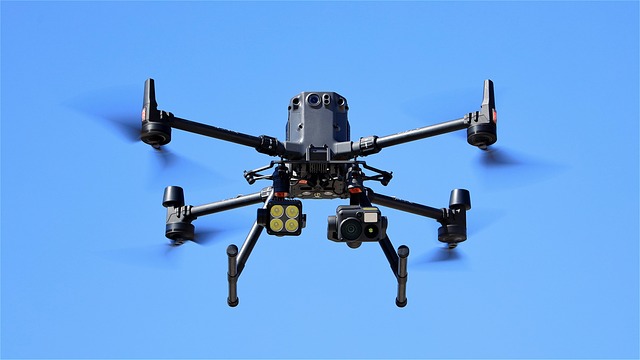Proactive monitoring, powered by advanced tools, is a vital IT strategy that predicts and prevents disruptions, minimizing downtime through real-time visibility into hardware, software, and network health. It includes regular updates, patch management, and automated backups, enhancing operational efficiency and user experience. This approach contrasts with reactive problem-solving, allowing IT teams to focus on strategic initiatives while ensuring business continuity in today's digital landscape.
In today’s digital landscape, minimizing downtime and maximizing efficiency are paramount for business success. This article explores how scheduled and preventive IT services serve as powerful tools for achieving these goals. We delve into strategic approaches like proactive monitoring, which detects potential issues before they disrupt operations. By implementing structured maintenance routines and proactive strategies, organizations can ensure a robust IT infrastructure, enhance productivity, and maintain continuous service delivery.
- Proactive Monitoring: The Key to Uninterrupted Operations
- Identifying Potential Issues Before They Impact Business
- Efficient IT Maintenance Through Scheduled Services
- Preventive Measures for System Downtime Reduction
- Enhancing Productivity with Timely Interventions
- Building a Robust IT Infrastructure for Continuous Service
Proactive Monitoring: The Key to Uninterrupted Operations

Proactive monitoring is a critical component of any robust IT strategy, serving as the cornerstone for scheduled and preventive IT services. By implementing sophisticated tools and systems that constantly track network performance, server health, and application functionality, organizations can anticipate issues before they disrupt operations. This approach, often referred to as proactive support, involves regular scans, checks, and diagnostics aimed at identifying potential problems early in their lifecycle.
For instance, regular network defragmentation ensures data flows smoothly, preventing congestion that could lead to slow system responses or service outages. Similarly, tech upkeep schedules are designed around proactive monitoring, enabling IT teams to conduct routine maintenance tasks without causing downtime. By adopting these practices, businesses can significantly reduce the risk of unexpected failures, thereby enhancing overall operational efficiency and ensuring a steady flow of services for their users.
Identifying Potential Issues Before They Impact Business

Proactive monitoring is a powerful strategy that allows IT teams to identify potential issues before they disrupt business operations. By leveraging advanced monitoring tools and techniques, organizations can gain real-time insights into the health and performance of their hardware, software, and network infrastructure. This proactive approach enables them to address problems early on, preventing potential downtime and minimizing its impact.
CPA (Computer Performance Analysis) hardware health checks, for instance, play a crucial role in maintaining optimal system performance. Regularly scheduled scans can detect underlying issues such as hardware failures, resource bottlenecks, or software conflicts before they escalate. Uptime enhancement tools, coupled with proactive monitoring, ensure that systems are optimized and running efficiently, leading to enhanced productivity and reduced downtime. Additionally, system optimization techniques like regular updates, patch management, and automated backups contribute to maintaining a stable and secure IT environment, further improving overall business efficiency.
Efficient IT Maintenance Through Scheduled Services

Efficient IT Maintenance Through Scheduled Services
In today’s digital age, where businesses heavily rely on technology for their day-to-day operations, minimizing downtime and maximizing efficiency is paramount. Proactive monitoring through scheduled tech upkeep schedules serves as a powerful tool to achieve this goal. By implementing regular IT maintenance contracts, organizations can ensure that their systems are consistently updated, patched, and optimized, thereby reducing the risk of unexpected failures.
Proactive support CPAs (Cost-Performance Agreements) allow businesses to budget effectively while receiving continuous monitoring and quick response times in case of issues. This approach contrasts with reactive problem-solving, which often leads to prolonged downtime and increased costs. With scheduled services, IT departments can focus on strategic initiatives instead of constantly firefighting, ultimately enhancing overall operational efficiency.
Preventive Measures for System Downtime Reduction

Implementing preventive measures is a proactive approach to system downtime reduction, rather than merely reacting to issues after they occur. The cornerstone of this strategy is proactive monitoring. By leveraging advanced uptime enhancement tools, organizations can continuously track system health metrics, predict potential problems, and proactively address them before they disrupt operations. This involves regular system checks, performance analyses, and automated alerts for any anomalies or impending failures.
Additionally, incorporating system optimization techniques ensures that the infrastructure is configured efficiently. Regular desktop cleanup, removal of obsolete files, and efficient resource allocation can significantly improve overall system stability and responsiveness. These measures not only minimize unexpected downtime but also contribute to a more streamlined IT environment, enhancing productivity and user satisfaction.
Enhancing Productivity with Timely Interventions

In today’s fast-paced business environment, minimizing downtime is paramount for maintaining productivity and staying competitive. Proactive monitoring, using advanced IT uptime enhancement tools, plays a pivotal role in achieving this goal. By continuously assessing system performance and health, these tools enable technicians to predict potential issues before they disrupt operations. This proactive approach, integrated into well-structured tech upkeep schedules, ensures that routine maintenance is performed consistently, preventing unexpected failures and prolonging equipment lifespan.
Additionally, proactive monitoring facilitates system optimization—a key component in enhancing overall productivity. By identifying bottlenecks and areas for improvement, IT teams can make data-driven decisions to streamline processes, upgrade hardware, or implement new software solutions. This not only reduces downtime but also improves the efficiency of operations, leading to better resource allocation and ultimately, increased profitability.
Building a Robust IT Infrastructure for Continuous Service

Building a robust IT infrastructure is paramount for delivering continuous services. Proactive monitoring plays a pivotal role in this pursuit, enabling organizations to identify and address potential issues before they escalate into downtime. By implementing advanced monitoring tools, businesses can gain real-time insights into system performance, network traffic, and application health. This data fuels proactive support strategies, such as regular system optimization routines and IT maintenance contracts, ensuring that any vulnerabilities or bottlenecks are promptly mitigated.
Moreover, integrating proactive monitoring with well-structured IT maintenance plans allows for more predictable service levels. Organizations can negotiate specific Service Level Agreements (SLAs) with their providers, focusing on key performance indicators like response times, resolution rates, and availability targets. As a result, proactive monitoring not only reduces unplanned downtime but also aligns IT operations with business goals, driving efficiency gains and fostering a stable digital environment.
